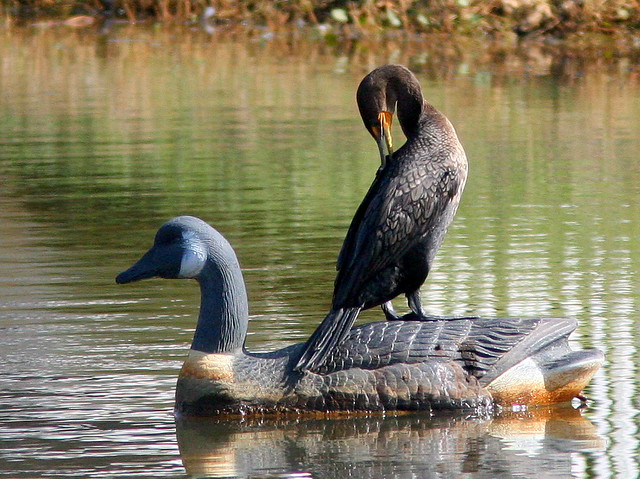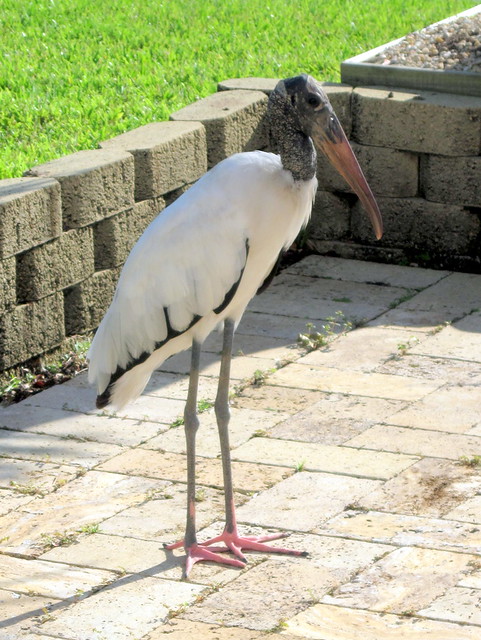Posted by: Ken @ 8:39 pm
Returning from Illinois this past Thursday, our aircraft passed eastward over the Fort Lauderdale airport and took a long downwind leg over the ocean. This meant that the wind was blowing in from the Everglades, and we could expect rising temperatures and a plague of mosquitoes until the easterly sea breezes returned.
The unsettled air produced a lovely sunrise, but bad as the mosquitoes, heat and humidity have been, other concerns are keeping us from going afield:
When we opened our front door upon arriving from the airport, we were greeted with the stench of rotting fish. At some time early in our 6 weeks of visiting Illinois and cruising the western Mediterranean, my 55 gallon glass aquarium had developed a pinhole leak about halfway up. A corresponding amount of water (along with an additional 8 gallons in a reserve tank that maintains the water level when we are away) had flowed to the floor. The filtration system became inoperative, and the water turned stagnant. All five of my big Koi died from oxygen deprivation. They were in advanced stages of decomposition. Not a nice welcome!
I quickly disposed of the dead bodies, but it was too late in the day to do much more. Luckily, our floor is travertine marble, and the aquarium is located next to a sliding glass door, so the water mostly flowed directly outside under the metal door frame. The cabinet under the tank was badly stained, and I have spent much of past three days cleaning and repairing the tank, and refinishing the cabinet.
Six weeks ago, just before we departed for Illinois, we had an interesting visitor on our back patio. It was an adult Wood Stork, the first we had seen this summer. The storks have had two consecutive unsuccessful breeding seasons in the southern Everglades. Water levels must be nearly perfect before they will begin nesting. Water must be deep enough to protect them from terrestrial predators. Yet, since the storks are tactile feeders, the water must be shallow enough to concentrate their own prey. Water deeper than about a foot causes them to abandon their nest area to forage far and wide, and there is danger that their unprotected young may starve or be killed. Most summers, we have had family groups of adult and immature storks.
I took this photo through the open patio door:
The stork was unusually tame, and it walked right up to our patio window. Though it appeared otherwise healthy, we were concerned that it might be ill or impaired:
This afternoon I looked out the back window and found a Great Blue Heron resting on our patio wall. It was standing in full sun and the heat-stressed bird exhibited intense gular flutter (rapid pulsation of the throat, a cooling measure). I could not fit the entire bird in my telephoto lens, as it was only 20 feet from the window, so I had to use my point-and-shoot Canon PowerShot A 1100 IS for full-body shots.
I backed away from the window and got head and neck images with
the 420mm lens system. Taken through the window glass, both shots are a bit soft
We do not put out feeders, as the Muscovy Ducks and Rock Pigeons overwhelm them. Our lake itself is a big “bird feeder,” and so are our patio, lawn and trees. When we can’t get out, we wait for the birds to visit us.
Blue Jays nest in our back yard mahogany tree:
A Yellow-crowned Night-Heron forages on our lawn for insects, earthworms and lizards:
Killdeers probe the water’s edge:
A Little Blue Heron chases after lizards and geckos on our patio:
Cattle Egrets generally stay away from the water, but sometimes stop by: 
A stealthy Green Heron sits in a flower pot:
The heron,alarmed by my presence, raises its shaggy crown:
A single dead fish may attract several Turkey Vultures:
Ospreys fly overhead:
A Double-crested Cormorant rests on a decoy that serves as a float for a lawn irrigation intake. The goose’s sculpted plumage mimics that of it passenger :
Soon, Palm Warblers will return for the winter::
This Loggerhead Shrike is hunting for anoles in the impatiens:
A Muscovy Duck walks her brood across our patio:
This Green Iguana enjoys munching on our flowers:


















